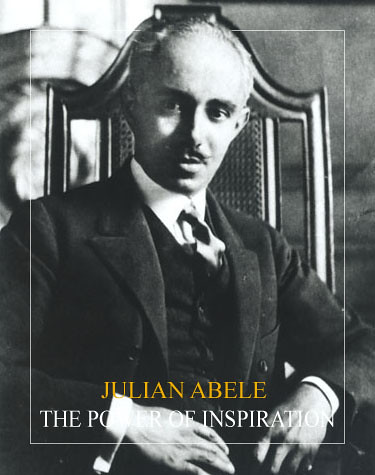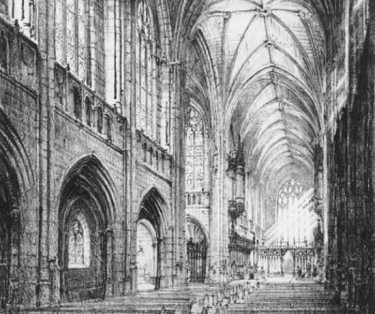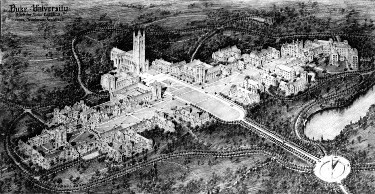
Volume IX, Issue IIIa
Julian Abele, Architect
The great architects of the Beaux Arts tradition relied heavily on the power of their own drawing ability to visualize their unfolding design process. Julian Albele (1881-1950) was a master of this craft. His surviving drawings of what many consider to be the most beautiful building in the state of North Carolina would be impressive for their archival record alone. Abele is a man who deserves to be studied further for his accomplishments; for his is one of the great stories of America.
Albele was born in 1881, the youngest of eight children in a Philadelphia family. He showed great abilities in mathematics as a child and attended the Quaker-run Institute for Colored Youth, which later became Cheyney University. He completed a two-year architectural drawing course at the Pennsylvania Museum School of Industrial Art, earning the nickname: "Willing and Able." Julian Abele was the first African American student to enroll in the Department of Architecture at the University of Pennsylvania, and became the department's first black graduate in 1902. His studio partner was Louis Magaziner, the only Jewish student in the department, who was of Hungarian descent. The two became lifelong friends.
In 1906, Abele joined the firm of Horace Trumbauer as assistant to chief designer Frank Seeburger. In 1909 Seeburger left the firm and Abele became the chief designer in his place. He was the second highest paid employee in the firm. During the years of the Great Depression and the World War, commissions were few and far between. but in Durham, North Carolina, the Julian S. Carr and Washington Duke family fortunes would fund the Duke Endowment. A great gothic campus would be build, designed by Julian Albele, in a commission won by the Philadelphia firm.
In the segregated South, the impeccably dressed francophile, Albele, was once reportedly denied lodging by a Durham hotel. In those days attribution was scarcely given to team members so the Trumbaurer firm name was credited as the architect of record. It wasn't until late in the Twentieth Century that proper attribution was accorded Albele and a portrait of the architect was displayed at the university. His legacy is an incredible one. The chapel he designed is considered by many one of the most beautiful buildings in the region!

Julian Abele's rendering for the tower of Duke University Chapel in Durham, North Carolina.

Julian Abele's rendering for the interior of the Duke University Chapel.

Julian Abele's rendering of the Duke University Campus.




No comments:
Post a Comment